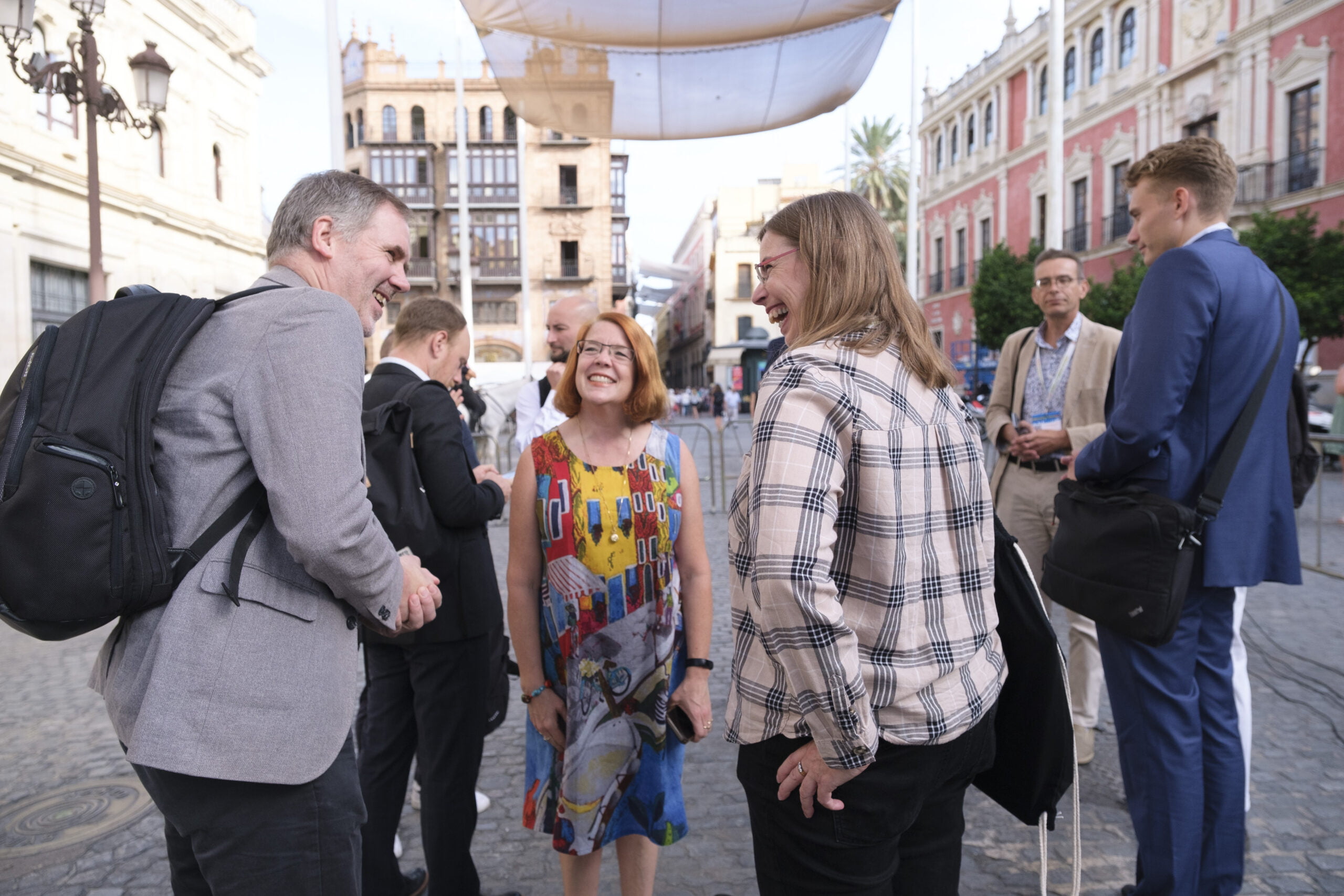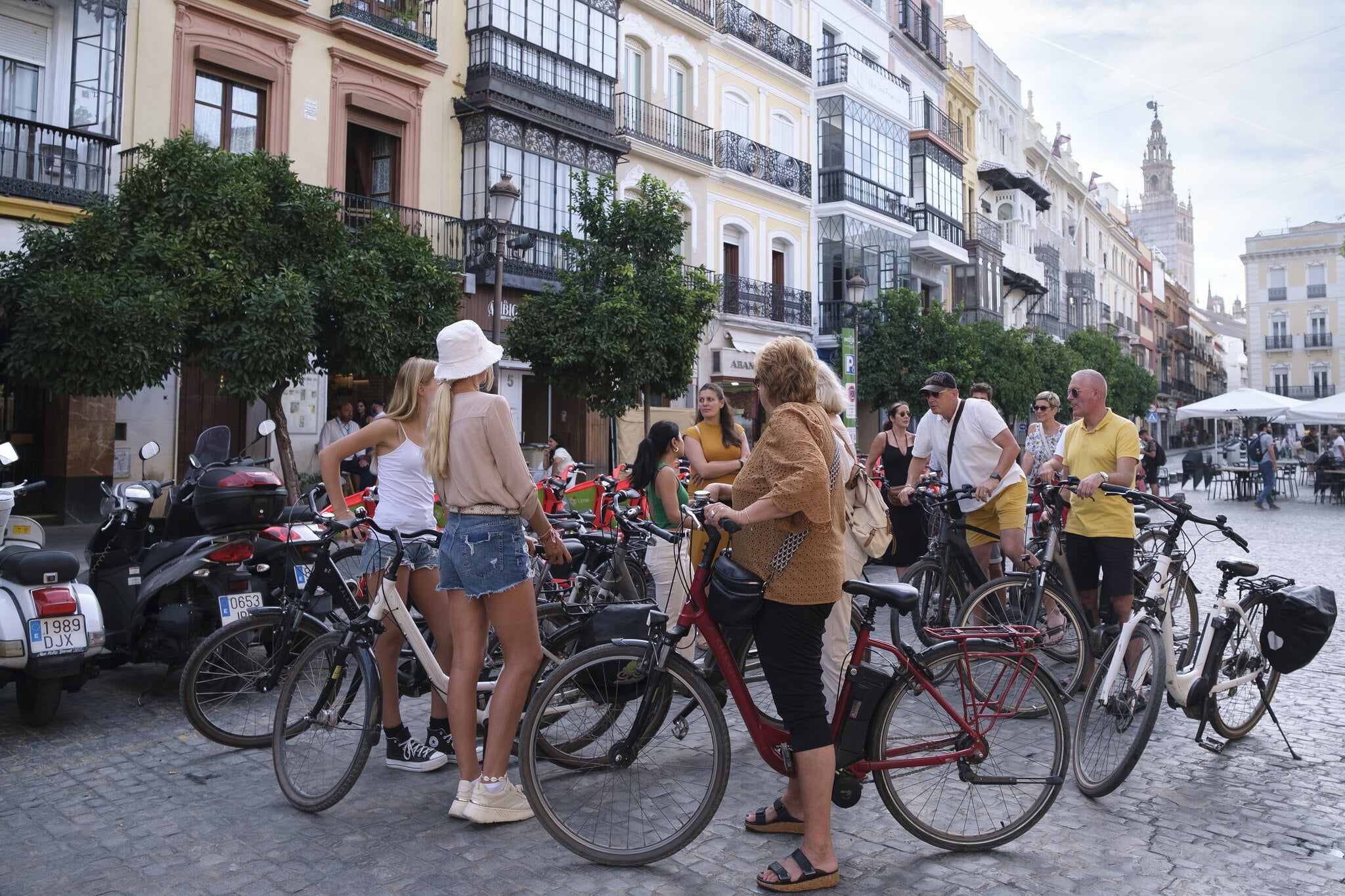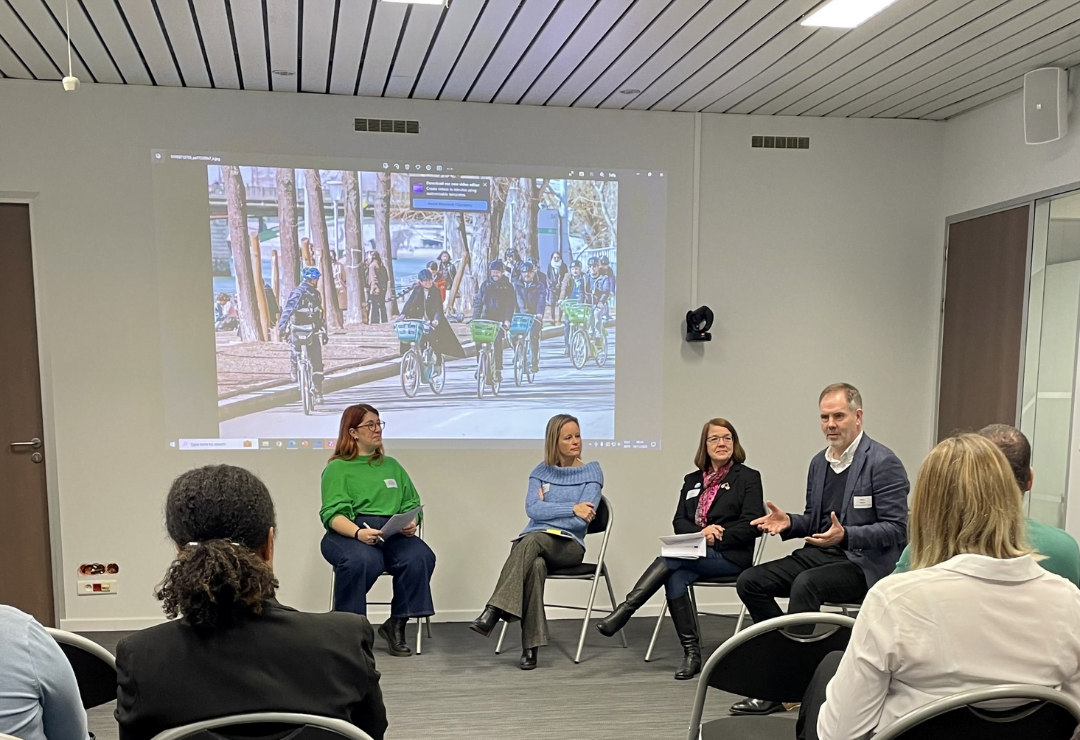After the Cycling Declaration? POLIS, CIE and ECF talk tough!
POLIS, European Cyclists’ Federation (ECF) and Cycling Industries Europe (CIE) held a joint event to examine how to translate Europe's policy commitments to cycling into change on the ground.
This October, the European Commission released its Cycling Declaration. Calling for increased prioritisation of cycling as part of Europe’s urban mobility policy landscape, it marked the centrality of pedal power in the future of transport- and climate action- in cities in regions.
Following the launch of this pivotal document, POLIS, ECF and CIE convened to discuss what is next.
At a breakfast session hosted at POLIS premises in Brussels, Karen Vancluysen, Secretary General of POLIS, Jill Warren, CEO of ECF and Kevin Mayne, CEO of CIE sat down to explore prospects for cities, regions, civil society and industry, and what cross-sector collaboration looks like.
“We welcome the Declaration warmly,” said Karen Vancluysen
“It positions cycling clearly in the trajectory of sustainable urban mobility, acknowledging cycling and its place in the mobility ecosystem, while connecting all levels of governance across the sector.”
“This is the most ambitious initiative we have seen from the Commission on this, and are pleased that it reflects so many of our long-standing policy demands,” echoed Jill Warren.
The cycling industry also welcomes the Declaration eagerly.
“My congratulations to the DG MOVE here, this elevation of cycling shows that it is a clear partner in this process towards sustainability with other means of transport,” said Kevin Mayne.
“This is a dramatic change from the past years, cycling has seen a fantastic growth, the pandemic was part of this, but it was an industry- and networks- wide move, which doubled down on the support for cycling services and those involved in the sector.”

Launch of the cycling declaration in Seville, with Jill Warren and Kevin Mayne. credit San Francisco - ©lateral - 6
Where we have come, and the path yet to travel
Over the last decade, and particularly following the COVID-19 pandemic, bicycle infrastructure and technologies have enhanced rapidly, with cycling more accessible than ever before. Bike sharing, parking facilities, segregated cycling infrastructure and of course e-bike technologies, have expanded the reach of cycling to new geographies and communities.
However, if we are to achieve decarbonisation and inclusion targets, there remains much progress to be made. Despite the fact that 60% of urban trips across the globe are currently shorter than five kilometers, more than half of them are currently traveled by motorised vehicle. We have seen temporary changes during the pandemic, yet, while many cities successfully sustained modal shift and cycling uptake, consistent and significant action is still required.
Governance and funding, allocation of space, safety, gender, cultural and social barriers and affordability still require attention from local, regional and international decision-makers and practitioners. With 2030 carbon neutrality targets fast approaching, the need for action is more urgent than ever.
Over the last several years calls for action have grown, with coalitions like the Partnership for Active Travel and Health (PATH) bringing together voices from across the sector to campaign for more rigorous policy and improved funding for cycling.

cyclists in Seville, credit San Francisco - ©lateral - 7
The data is clear- cycling and climate action go hand in hand. A 2022 study based on data gathered in seven European cities revealed cyclists had 84% lower lifecycle CO2 emissions from all daily travel than non-cyclists. Meanwhile, recent academic research shows ‘significant potential of active travel to substitute short car trips, with sizeable impacts on carbon emissions from personal travel’.
So, we know what is needed, we just need to get there.
- The Declaration thus arrives at a critical juncture, making firm commitments on:
- Developing, adopting and strengthening cycling policies and strategies at all relevant levels of governance
- Increasing the use of cycling to promote social inclusion by paying particular attention to the needs of women, children, older people and vulnerable and marginalised groups
- Significantly increasing safe and coherent cycling infrastructure across europe
- Providing technical support, funding and financing to help develop and implement cycling strategies and cycling-related investments
- Enforcing road safety rules and legislation to ensure the coexistence of different means of transport, with a focus on protecting cyclists and other vulnerable road users
- Supporting quality green jobs and the development of a world-class European cycling industry
- Promoting and implementing multimodal solutions in urban, suburban and rural areas
- Developing harmonised indicators related to cycling
Translating talk into action: What do we need next?
The breakfast session was an opportunity to look towards the future of urban cycling, and how the European Commission’s commitments can be harnessed for cross-sector action supporting cities and regions to accelerate their modal shift.
Cycling in suburbia
There was a clear need to look beyond the urban core to include peri-urban and rural areas, often omitted or underserved by public transit, rendering them car-dependent.
“Indeed, this declaration makes room for a more comprehensive focus on seamless multimodal travel which is critical for areas beyond the urban core if they are to move away from car dependency,” noted Vancluysen.
“One of the most important developments we are seeing is the development of long-distance routes and cycle highways, which are helping people travel further as well as enabling more commuting by bicycle with smoother journeys between cities and towns,” noted Warren.
“We cannot afford not to think of suburbia and peri-urban areas, we need to crack the mid-distance trips which are still dominated by cars, with e-bikes offering great potential” continued Mayne.

credit: levi-arnold/ unsplash
The instrumentality of multi-modal thinking and urban planning was recognised as essential to supporting this, encouraging bicycles as a more popular mobility choice alongside public transport.
The availability and quality of data for designing such shared, integrated and connected infrastructure and services is rapidly enhancing the capacity for cycling to take a leading role in urban mobility.
“If we don’t actually count trips, we don’t know how we can improve services and multi-modality, we need to further understand trips, and what is our potential for catalysing mode shift in the most efficient way,” said Mayne.
Cycling and economic growth
Cycling in cities and regional areas is also proving important for green growth. The Cycling Declaration outlines the capacity for cycling to drive local economic growth, particularly for tourist destinations, with cycling fast becoming not just a conduit for travelling, but an attraction in itself.
Indeed, the increasingly popular EuroVelo routes are also bringing additional revenues to locations across Europe, while supporting local journeys in the process.
“When infrastructure is built for tourism, it also improves rural connectivity and fosters higher levels of cycling in local communities - not just for leisure reasons,” Warren said.
Here the growth of employment opportunities was also noted as a key connection between cycling and economic growth.
“This green industry component is key, as too often economic arguments are used for watering down ambitions on climate action and mobility,” said Vancluysen.
Indeed, the potential for significant growth in jobs in the cycling sector is noted distinctly in the Declaration, which asserts that greater uptake of cycling means more high-quality, local jobs and is beneficial to the EU economy and cycling industry, as well as aligning with the EU industrial strategy.
“There is economy in this, we have a crisis in transport jobs, and the cycling sector has the capacity to support the transition for jobs and skills, safeguarding local jobs,” reiterated Mayne who noted that in many European regions, cycling is proving an important employer.

Bike share is flourishing in Seville, despite the sweltering conditions! credit: San Francisco - ©lateral - 1
However, ensuring that the sector has the correct skills requires making it an attractive employer, and efforts such as Women in Cycling and other sectoral initiatives are critical in continuing to attract new and diverse skills, while ensuring the sector makes the necessary workplace changes to be as inclusive as possible.
However, the necessity for cooperation between cycling and educational and research institutions was highlighted as a prerequisite for success.
“If we are going to do this skills transition, we need the skills, and we need people in the sector to be ready for upcoming changes, and this won’t happen overnight, but it needs to be firmly on our horizon,” noted Mayne.
Putting money where our mouth is
However, behind all this, funding and financing from national and international stakeholders is indispensable.
“We cannot escape that funding and support from the European level is needed now,” asserted Vancluysen.
“You have to provide the funding to match the ambition, we have said for years that national transport ministries should be dedicating around 10% of budgets towards cycling,” echoed Warren.
Yet, capitalising on the current projects and initiatives is equally critical, and all panellists concurred that the sector cannot afford to squander the learnings, resources and technologies being developed in cutting-edge projects.
What’s next? Braver, bolder bicycling
“Yet politicians also need to be brave, and not underestimate the desire of their citizens for change, to look beyond the negative noise being made by a loud minority,” said Vancluysen.
Across Europe, there is a clear move towards more sustainable mobility policy agendas by local political leaders, yet all panellists called for greater peer-to-peer support, encouraging other decision-makers to elevate their voices and match rhetoric with bold action.
“I would also call on industry leaders to play their part here supporting mayors and deputy mayors,” echoed Mayne.
Want to know more?
Through POLIS' Active Travel & Health Working Group, we look at walking, wheeling, and cycling as integral parts of mobility systems while considering interactions with urban planning, environment and health.
The working group aims to foster discussions and exchanges on strategies and measures for prioritising active modes and enabling a more balanced distribution of public space for improved quality of life for everyone.
Find out more HERE.
